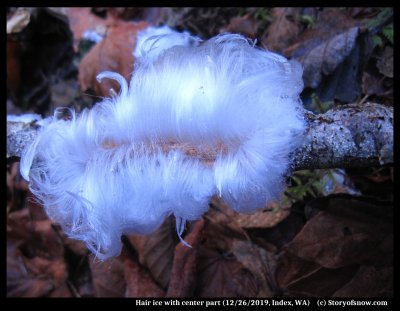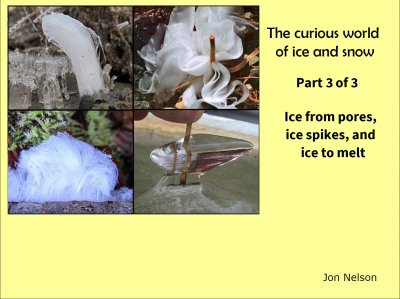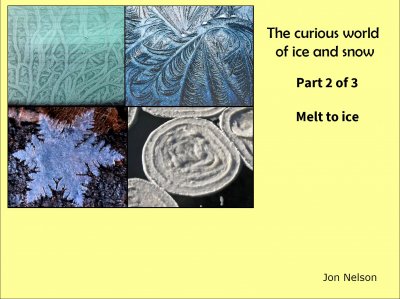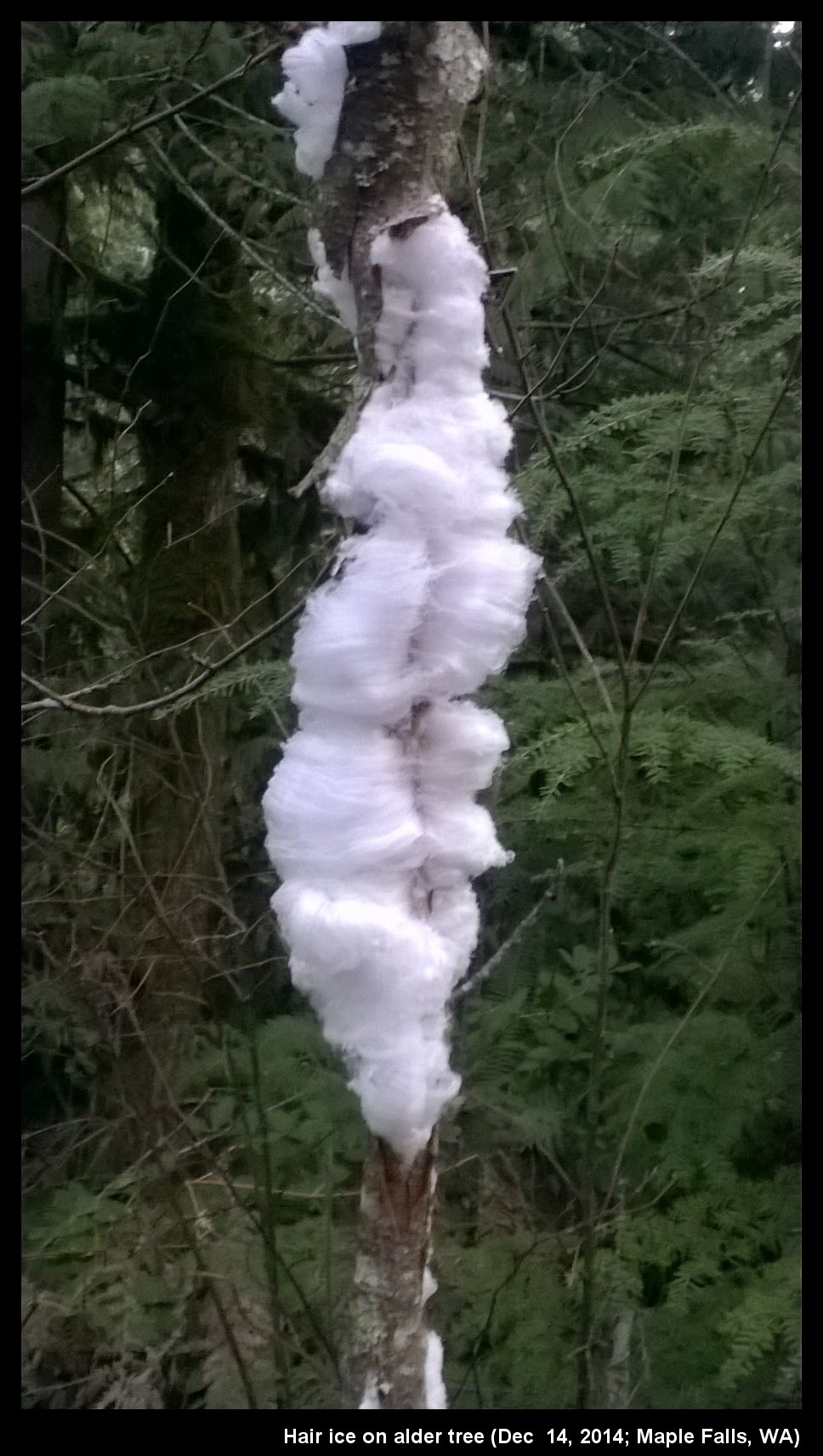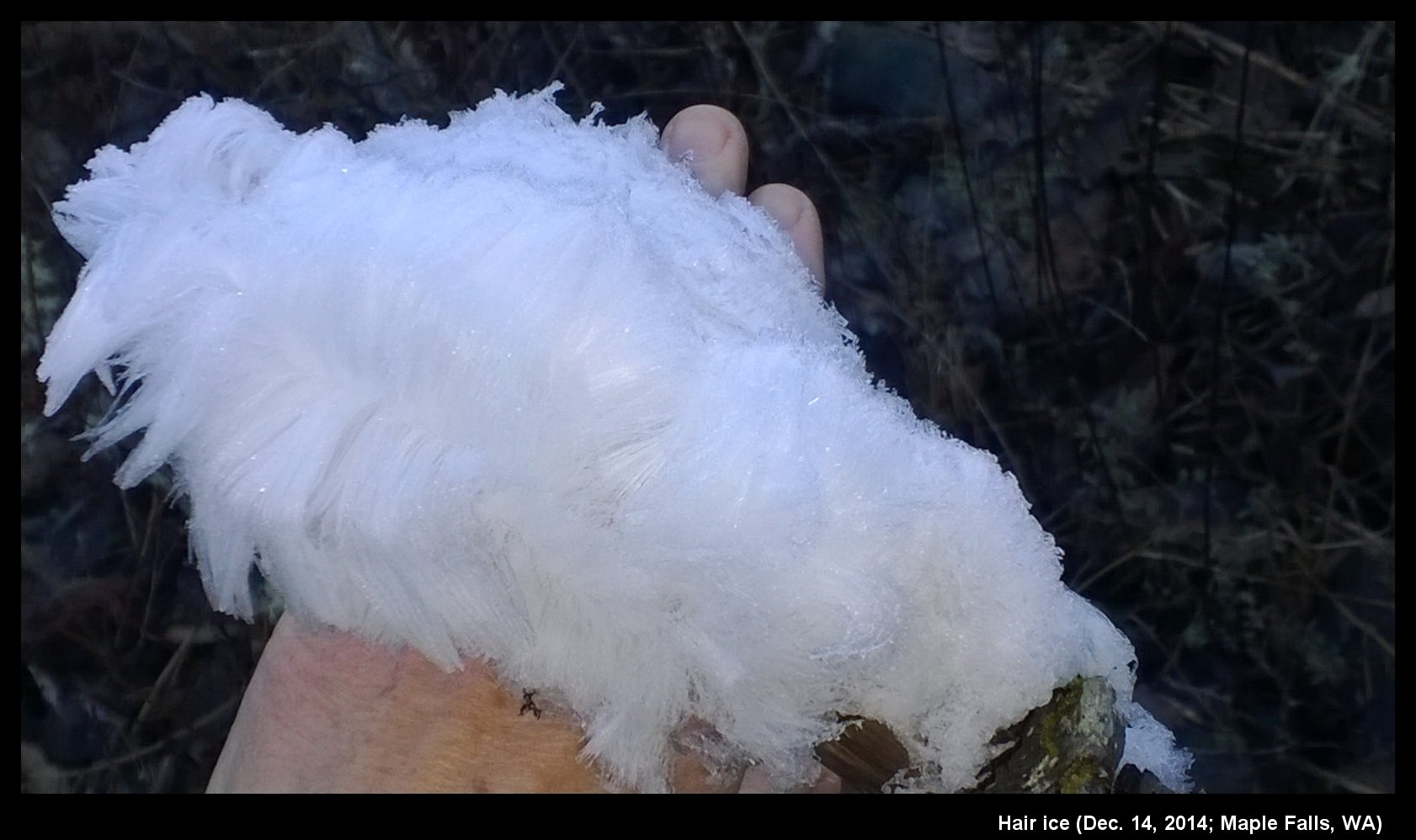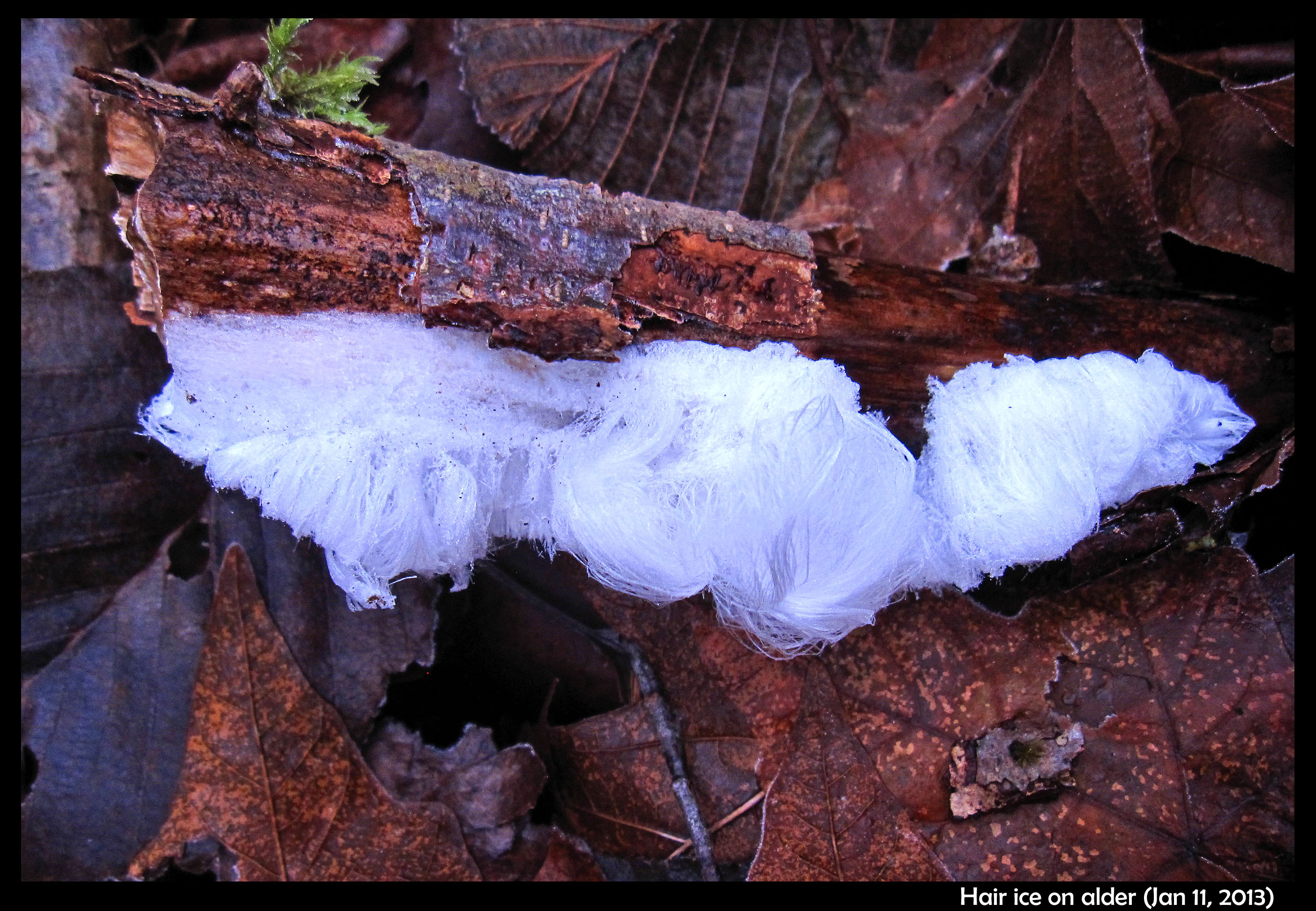Category: "Hair ice"
Parting and Bending of Hair Ice
February 22nd, 2022Hair ice often shows a clear "parting".
By part, I refer to that line along the underlying log surface, either side of which the hair tilts further to the side, analogous to the part one makes in one's own hair with a comb. An explanation for the cause of the part is unlikely to be found in the nature of the pores (from which the ice originates), but rather in the differing rates of growth of adjacent hairs.
The Snowflake’s Closest of Kin
February 21st, 2022[From 2006 through 2012, I contributed annual articles to the annual newsletter "Snow Crystals" for the Wilson Bentley Historical Society. That newsletter is no longer available, so I will repost my articles here, starting with this one from 2006.]
Wilson Bentley is well known to readers here for his photomicrographs of snow crystals. Snow, however, was only one of the many ‘water wonders’ that held his fascination (ref. 1). Some of these wonders were made of liquid water, such as dew, and some, like the snow crystal, were frozen water (ice).
The frozen type he called “The snowflake’s closest of kin”, and they included hoarfrost, rime, windowpane frost, and ice flowers (2). To obtain photographs of any of them with the quality obtained by Bentley is difficult even now, which is yet another reason to admire Bentley’s skill and perseverance.
On the inside, these ‘kin’ all have the same crystal structure. But they appear different on the outside, largely due to the different ways the water in the surroundings gets to the ice surface. There are many distinct kin because the surrounding water can be in various states (i.e., ice, liquid, and vapor) and there are many ways that each state of water can get to the ice surface. I’ll focus here on snow crystals, hoarfrost, rime, windowpane frost, and ice flowers. These forms are commonly seen by many of us, and have been observed by people for a very long time. So it is easy to think, as I probably once did, that they are well understood by science. But this view is quite mistaken. Yes, we know they all consist of H2O molecules and we know something about the structure of ice, but how exactly they form contain many mysteries. I’ll describe briefly what Bentley thought of them, and what I think is known and not known about them.
The Curious World of Ice and Snow: Part 3 of 3
February 8th, 2020These 14 slides are the final (third) section of my Science Cafe talk. (Plus two slides added as an introduction.) As in the previous section (previous post), this section mostly has ice forms that come from the melt, but the ice shapes here are a little "hairier". And at the end we return to forms influenced by the vapor. As with all these forms, I doubt any could have been predicted before their discovery. Nature is complicated, so Nature surprises us.
Click on any image to enlarge it.
As before, the green font below shows the content of this section. The first five cases involve melt flow along surfaces and in narrow pores. Remember that melt is another name for liquid. (The term melt is more accurate though, as it implies pure water, whereas liquid could be water mixed with any solute. For example, salt water is a liquid, but it is not melt.) As mentioned in part 2, their formation from the melt means that they tend to grow relatively fast and large.
First up is perhaps the most common. Do you know what is going on when the ground becomes crunchy?
The Curious World of Ice and Snow: Part 2 of 3
February 8th, 2020As I mention in Part 1, these are slides I gave for a Science Cafe discussion session in 2012. This section focuses on ice that forms directly from the melt, that is, the liquid phase. Contrast these cases with those in part 1 in which the ice grew from the vapor. Some of these cases might seem a little familiar, but many ought to seem downright bizarre.
As always, click on an image to enlarge it.
The contents here are emphasized in green font below. The underlying difference between ice growth from vapor and from melt is that the melt is much denser. The higher density means that vastly more water molecules can impinge on the ice surface in a given time and area. This higher impingement usually means faster growth and larger crystals, but the way that the melt reaches the crystal influences the form, and the result is not always so obvious. In fact, I would even say that it is never obvious.
OK then, let's get right back into it.
Lots of Hair Ice
December 19th, 2014My older sister sent me this photo on a recent morning.
This is hair ice growing from an alder tree. All of it grew overnight, formed when liquid water near the outer trunk surface (beneath the bark) froze. This creates an ice front in each pore-like structure. Water inside the trunk flowed out to the ice front, pushing each hair-like strand of ice outward.
It probably does not get as cold under bark unless the bark is partly peeled off, so the hair ice comes out of bare spots in the trunk, as shown in the photo above. The air temperature got down to 26 F that night, and the tree was next to a dirt road, and thus partly exposed to the sky.
Like the needle ice that grows out of the ground, it grows relatively fast, producing relatively long hairs. From another spot, down near a meadow:
--JN
Hair Ice on Wood and Pavement
January 16th, 2013The morning after a rapid cool-down, I found hair ice on an alder log.
From a distance, it looked unnaturally white, like it was a bit of discarded cotton or white paper, but the closer I got to it, the more incredible it seemed.
